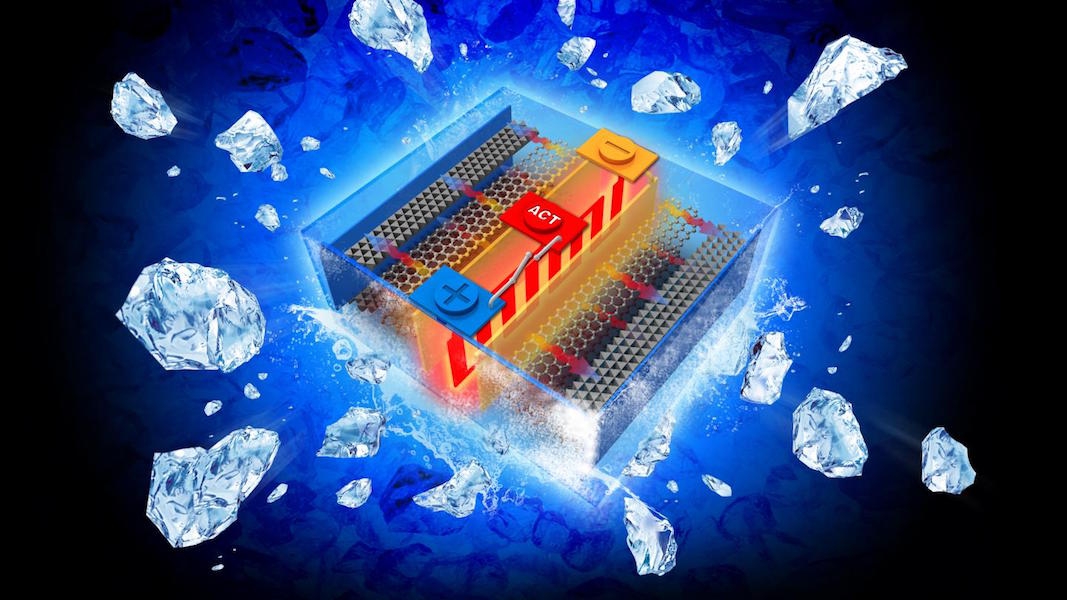
Electrified Transport
Features
Energy & Power
Energy Storage
Beat the EV Winter Blues with self-heating Li-ion battery
January 22, 2016 | By Anthony Capkun

January 21, 2016 – A lithium-ion battery that self-heats when the temperature is below 32F has multiple applications, says a team of researchers from Penn State and EC Power, State College, but may have the most impact on relieving winter range anxiety for electric vehicle owners.
“It is a long-standing problem that batteries do not perform well at subzero temperatures,” said Chao-Yang Wang, Electrochemical Engine Center. “This may not be an issue for phones and laptops, but is a huge barrier for electric vehicles, drones, outdoor robots and space applications.”
Conventional batteries at below-freezing temperatures suffer severe power loss, which leads to slow charging in cold weather, restricted regenerative breaking and reduction of vehicle cruise range by as much as 40%, the researchers say. These problems require larger and more expensive battery packs to compensate for the cold sapping of energy.
“We don’t want electric cars to lose 40% to 50% of their cruise range in frigid weather as reported by the American Automobile Association, and we don’t want the cold weather to exacerbate range anxiety,” said Wang. “In cold winters, range anxiety is the last thing we need.”
Relying on previous patents by EC Power, the researchers developed the all-climate battery to weigh only 1.5% more and cost only 0.04% of the base battery. They also designed it to go from -4F to 32F within 20 seconds, and from -22F to 32F in 30 seconds, and consume only 3.8% and 5.5% of the cell’s capacity.
The all-climate battery uses a 50-µm thick nickel foil with one end attached to the negative terminal and the other extending outside the cell to create a third terminal. A temperature sensor attached to a switch causes electrons to flow through the nickel foil to complete the circuit. This rapidly heats up the nickel foil through resistance heating and warms the inside of the battery. Once the battery is at 32F, the switch turns off and the electric current flows in the normal manner.
— With files from A’ndrea Elyse Messer
Print this page